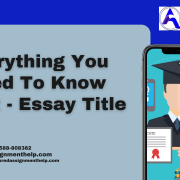Case study analyses the following (MAKE SURE YOU USE SCHOLARLY REFERENCES ATLEAST 10) Reading with a critical mindset: information not neat or complete Identifying the facts: who, what, when, where, how, why. Organising the facts for yourself Interrogating the facts Identify missing information Select readings and apply to the case Developing an argument Analysing vs describing Diagnosing underlying causes of problems Discussing best practice Generating alternatives Selecting solution options: decision matrix Justifying your solution Action plan development Answer these questions What is your view of the BCR concept? What would you do to (1) contact signatories to the Giving Pledge and (2) how would you get their attention? What other products could be used for a purpose entity? What are the important elements of a purpose entity? How are competitors in the banking industry likely to respond to the BCR if established? Aaron believes that proof-of-concept for the BCR and evidence of consumer propensity to switch services is required in order to attract philanthropic funding for the purchase of an existing bank. What alternative means of establishing a demand for BCR services could Aaron use? What customer behavioral challenges will BCR face in attracting customers? What are the challenges of using VAL’s typologies for targeting purposes? How will BCR be able to use these to accurately forecast the size of the target audience and consumer demand?
Assessment Rubrics BUA5MKG
Grading Criteria (Rubrics) – Case Study Analysis (30%)
Criteria
Fail: N (0% – 49%)
Beginning: D (50% – 59%)
Developing: C (60% – 69%)
Accomplished: B (70% – 79%)
Exemplary: A (80% – 100%)
Rating values
0 or 1 2 3 4 5
Overall Structure and Cohesiveness
Max 25 marks No cohesiveness. No demonstration of understanding of relevant issues.
Does not tie together information. The report does not flow and appears to be created from unrelated issues. Writing does not demonstrate any understanding of the relevant issues.
Sometimes ties together information from relevant sources. The report does not flow – disjointedness is apparent. The authors’ writing does not demonstrate an understanding of the relationship between material obtained from relevant sources
For the most part, ties together information from all relevant sources. The report flows with only some disjointedness. The authors’ writing demonstrates an understanding of the relationship among material obtained from all relevant sources.
Ties together information from all relevant sources. The report flows from one element to the next logically. The authors’ writing demonstrates an understanding of the relationship among material obtained from all relevant sources.
Information sources 15 marks
Few to no resources – irrelevant resources. Resources not current
Fewer than 5 relevant sources were used. Not all websites utilized are credible, and/or sources are not current.
More than 5 relevant sources were used. All websites utilized are credible.
More than 8 relevant sources were used, including scholarly books/journal articles. All websites utilized are authoritative
More than 10 relevant sources were used, including scholarly books/journal articles. Sources include both general background sources and specialized sources. Special-interest sources and popular literature are acknowledged as
such if they are cited. All websites utilized are authoritative.
Integration of Knowledge
20 marks Nil to no demonstration of learning of subject concepts. Confusion about important concepts.
The report does not demonstrate that the authors have fully understood and applied concepts learned in the subject.
The report demonstrates that the authors, to a certain extent, understand and have applied relevant concepts learned in the course.
The report demonstrates that the authors, for the most part, understand and have applied relevant concepts learned in the course and have reflected theory in practice.
The report demonstrates that the authors fully understand and have applied relevant concepts learned in the course. Concepts are integrated into the writers’ insights. The writers provide summary comments that evidence the melding of theory with practice.
Depth of analysis and synthesis
25 marks Sections are not addressed. Incomplete.
Cursory discussion in all sections of the brief.
The writers have omitted pertinent content or content runs on excessively. Material from others outweighs that of the writers, excessively.
In-depth discussion and synthesis in most sections of the brief.
In-depth discussion and synthesis in all sections of the brief.
Grammar/spelling / referencing
15 marks Major errors in grammar, spelling and/or referencing.
An unacceptable number of spelling and/or grammar mistakes. An unacceptable number of errors in referencing.
Noticeable spelling and grammar mistakes. Noticeable referencing mistakes.
Minimal spelling and/or grammar mistakes. Minimal referencing mistakes.
No significant spelling and/or grammar mistakes. No significant referencing mistakes.










